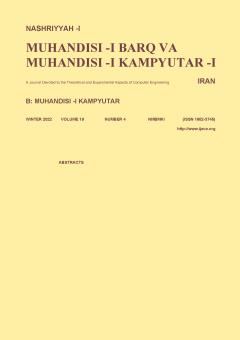-
-
List of Articles
-
Open Access Article
1 - Reliable and Energy Efficient Deployment Optimization of Internet of Things Applications in Cloud and Fog Infrastructure by Using Cuckoo Search Algorithm
Yaser Ramzanpoor میرسعید حسینی شیروانی -
Open Access Article
2 - Energy-Aware Data Gathering in Rechargeable Wireless Sensor Networks Using Particle Swarm Optimization Algorithm
Vahideh Farahani Leili Farzinvash Mina Zolfy Lighvan Rahim Abri Lighvan -
Open Access Article
3 - A New Data Clustering Method Using 4-Gray Wolf Algorithm
Laleh Ajami Bakhtiarvand Zahra Beheshti -
Open Access Article
4 - Proposing a Robust Method Against Adversarial Attacks Using Scalable Gaussian Process and Voting
Mehran Safayani Pooyan Shalbafan Seyed Hashem Ahmadi Mahdieh Falah aliabadi Abdolreza Mirzaei -
Open Access Article
5 - A Prediction-Based Load Distribution Approach for Software-Defined Networks
Hossein Mohammadi سیداکبر مصطفوی -
Open Access Article
6 - Outlier Detection in High Dimensional Data Using Entropy-Based Locally Relevant Subspace Selection
Mahboobeh Riahi Madvar Ahmad Akbari B. Nasersharif -
Open Access Article
7 - Detecting Human Activities Based on Motion Sensors in IOT Using Deep Learning
Abbas Mirzaei fatemeh faraji -
Open Access Article
8 - Evaluation of the Progression of Boxwood Blight Disease in the Forests of Northern Iran Using Satellite Image Processing Techniques
marzieh ghavidel Peiman Bayat Mohammadebrahim farashiani
-
The rights to this website are owned by the Raimag Press Management System.
Copyright © 2017-2026







